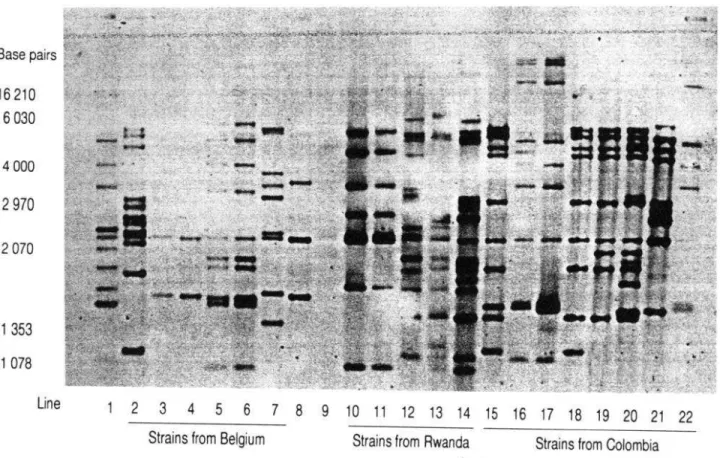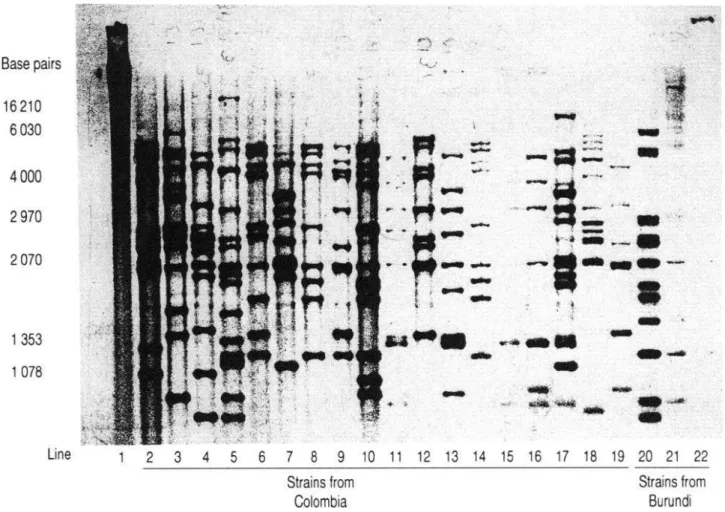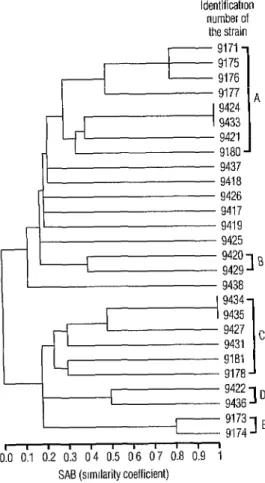Restriction fragment length polymorphism (RFLP) analysis and tuberculosis epidemiology
Texto
Imagem



Documentos relacionados
Characterization of strains from different host plants using repetitive sequences PCR analysis, and restriction fragment length polymorphism and short sequence DNA
Restriction fragment length polymorphism (RFLP) was used to exam- ine the extent of mtDNA polymorphism among six strains of rats ( Rattus norvegicus ) - Wistar, Wistar Munich,
Objective: The study aimed to investigate gyrA and gyrB mutations in Mycobacterium tuberculosis (MTB) clinical strains from 93 patients with pulmonary tuberculosis in Hubei
Identification of fungemia agents using the polymerase chain reaction and restriction fragment length polymorphism
In Natal, in the state of Rio Grande do Norte, in the Northeastern Brazil (the same geographic area as the state of Bahia), a study involving patients in a tertiary reference
Several techniques such as restriction fragment length polymorphism (RFLP), DNA- DNA hybridization, randomly amplified polymorphic DNA (RAPD), arbitrary fragment length
The present study evaluated the potential of polymerase chain reaction- restriction fragment length polymorphism (PCR-RFLP) analysis of the mitochondrial cytochrome B
Restriction fragment length polymorphism (RFLP)-IS 6110 pattern of 52 Mycobacterium tuberculosis isolates obtained from indigenous indi- viduals from the state of Mato Grosso do